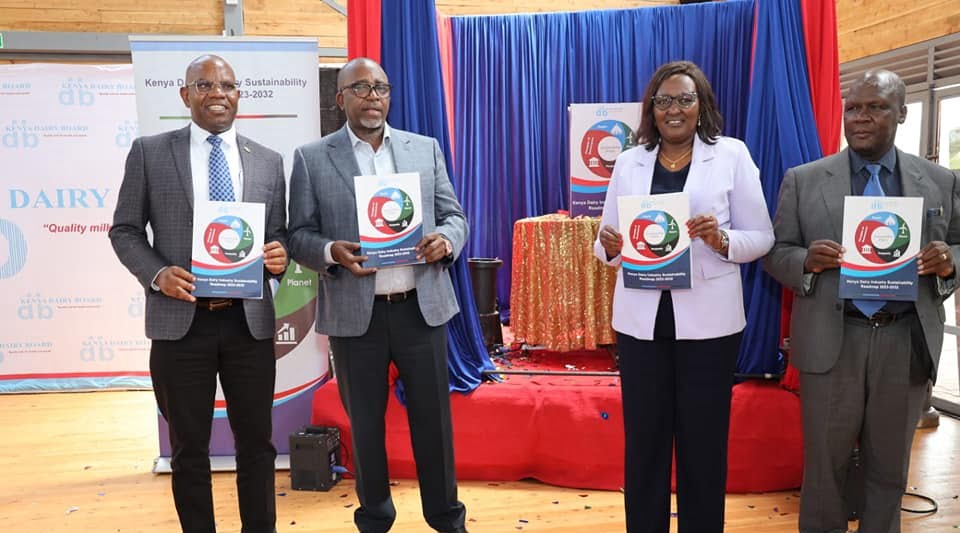Kenya Unveils Ambitious Dairy Sustainability Roadmap to Double Milk Production

The Kenyan government, through the Kenya Dairy Board (KDB), has unveiled a 10-year plan, the Kenya Dairy Industry Sustainability Roadmap 2023–2033, aimed at doubling dairy farmers’ income by increasing milk production per cow. The announcement was made by Mithika Linturi, the Cabinet Secretary for Agriculture and Livestock Development, during a launch event in Nairobi.
Linturi emphasized that the primary goal of the government is to raise annual milk production from the current five billion liters to an impressive 10 billion liters. The strategy includes a plan to increase dairy exports to one billion liters, elevate the formally marketed milk percentage from 30% to 50%, and boost the monthly revenue of small-scale dairy farmers to 56,000 Kenya Shillings.
The CS outlined key interventions to achieve these targets, focusing on improved access to fodder and feeds. The roadmap seeks to double the daily milk productivity per cow, addressing the challenge of the current yield per cow, which is below seven liters per day and falls short of global standards.
With an estimated dairy herd population of 5.1 million and over two million smallholder dairy farmers, Kenya currently produces 5.2 billion liters of milk annually, valued at over 230 billion Kenya Shillings. Linturi stressed the importance of enhancing productivity and noted that doubling production per cow is a more practical approach than increasing the size of the dairy herd.
To achieve this, the CS stressed the significance of providing better feeds, veterinary services, and a clean environment, with observable results in less than a week. He acknowledged that low productivity, high production costs, and other inefficiencies have hindered the industry’s potential.
In a bid to address environmental concerns, Linturi revealed the government’s commitment to reducing greenhouse gas emissions from the dairy sector by 0.4 Metric tonnes of CO2 equivalent by 2030. He highlighted ongoing collaborative efforts, including the “Pathways to Dairy Net Zero” (PADNET) project, developed in partnership with the State Department of Livestock Development, Kenya Dairy Board, UN, FAO, and IFAD.
READ: The 4 Key Roles of Food Traceability in Boosting Consumer Trust
The PADNET project aims to transition the dairy industry to lower greenhouse gas emissions and adapt more climate-resilient dairy systems. Linturi expressed optimism that the roadmap would enable the country to leverage modern technology and climate-smart approaches to competitively produce, process, and market an additional 2.5 billion liters of quality milk annually to meet growing demand.
Margaret Kibogy, the Managing Director of the Kenya Dairy Board, highlighted the roadmap’s goals, including increasing milk production to meet 105% of local demand, enhancing productivity to 20 liters per lactating cow per day for micro-commercial farms, and ensuring 80% of marketed milk undergoes the cold chain.
Developed with support from the United States Agency for International Development (USAID), the roadmap envisions modern farming, efficient manufacturing, cutting-edge research and development, increased finance, and expanded trade opportunities with implications for rural transformation.
Kibogy also revealed plans to reduce the retail price of packaged whole milk by at least 20% and provide on-farm coolers to farmers producing over 50 liters of milk per day and located beyond walking distance from a collective cooling facility.



